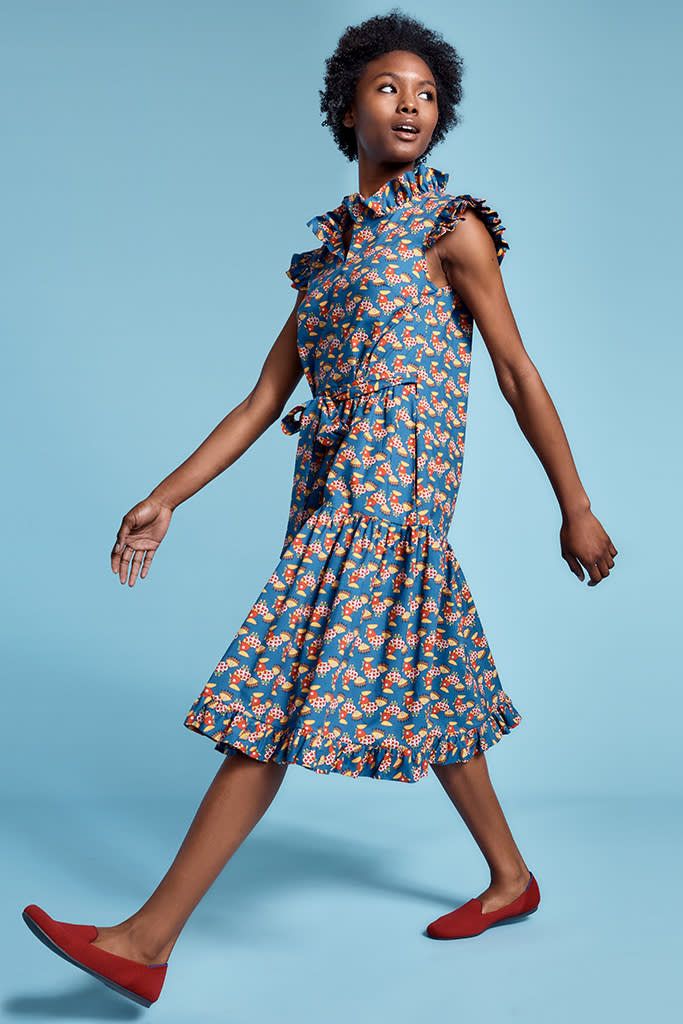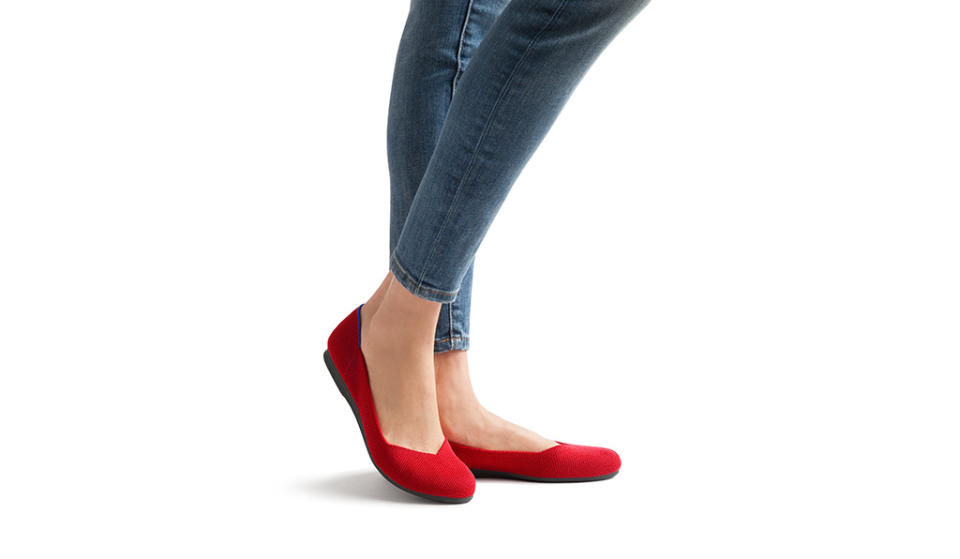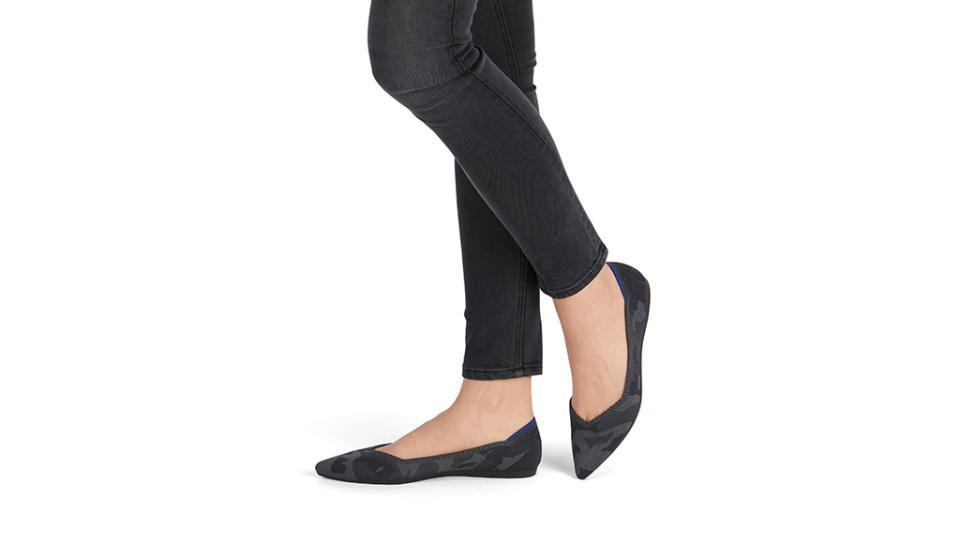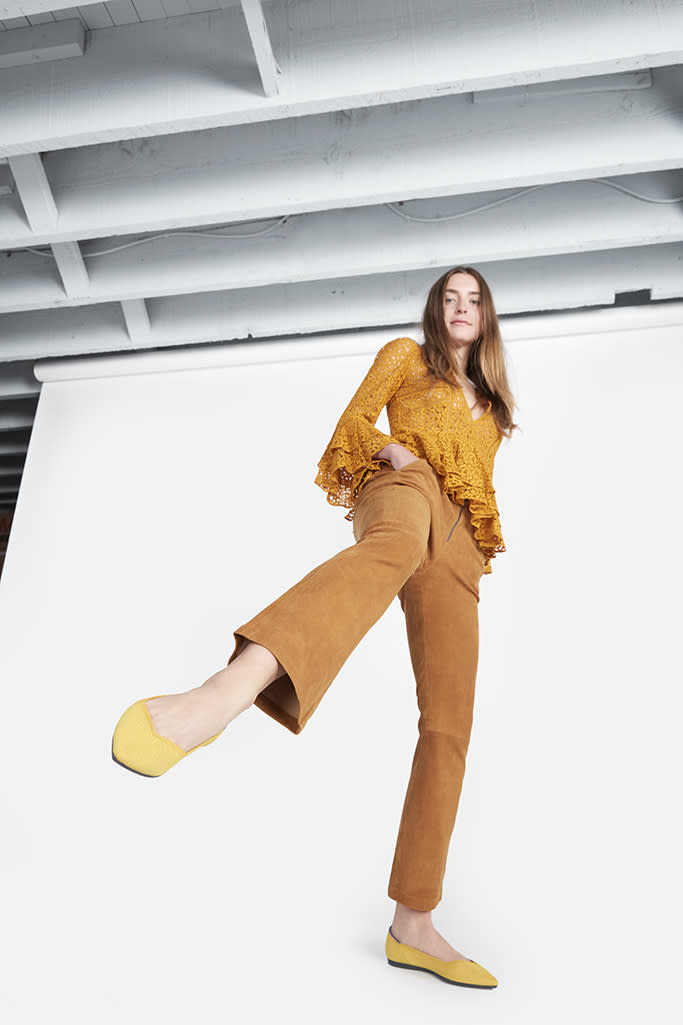How Two Shoe Outsiders Are Making Rothy’s One of the Most Talked-About New Footwear Brands

It’s safe to say Rothy’s has been challenging industry norms since its inception.
In 2015, shoppers were introduced to the flat shoes — made out of recycled plastic water bottles — in the vegetable aisle of San Francisco’s Ferry Plaza Farmers Market. The product was positioned between eggplants and Brussels sprouts. It wasn’t a typical debut, but co-founders Roth Martin, a San Francisco native and former gallery owner, and Stephen Hawthornthwaite, an ex-investment banker, weren’t typical footwear executives.
Related stories
Everlane's New Loafer Is So Good, It Had a 15,000-Person Waitlist
Meghan Markle's Latest Vintage Look Is From This London Boutique
“It was like going off, baking a cake, not letting anyone taste it and hoping they liked it. I didn’t even know people would take off their shoes and try it on,” Martin recalled, adding that the company’s shoes had been in development for four years prior to their debut. “It was an aha moment. Women were lined up to try them on. [I thought], ‘This thing might be big.’”
The sustainable storytelling helped Rothy’s gain traction on Facebook early on — and then many women began to spread the word offline, too.
“I know five women who have them in multiple pairs,” said Deb Gabor, author and CEO of Sol Marketing, a consultancy. “People align themselves with brands that are meaningfully different to them. What makes Rothy’s [stand out] is not the shoe itself; it’s the story behind it, the company, the experience buying the shoe and the essence of wearing it.”

Hawthornthwaite said that many of the label’s fiercely loyal and vocal fans, including Meghan Markle, have organically become ambassadors. Like other eco-focused upstarts such as Allbirds, word of mouth has proved to be the strongest business driver.
Last year, Rothy’s sold more than 1 million pairs of shoes, generating revenue of more than $140 million.
During a shaky time for retail, direct-to-consumer became a go-to for the company.
In addition, the startup has connected closely with its consumers on ecological concerns.
“Rothy’s came in a time where the importance of sustainability is so important to everyone. It spans Generation Z and millennials. This is what everyone is talking about,” said Farla Efros, president of HRC Retail Advisory.
Here are the reasons why Rothy’s is on the rise.
Going Green
At its core, Rothy’s is a direct-to-consumer sustainable brand focused on reducing waste in every step of the shoemaking process.
Designwise, the founders were looking to create a product that was stylish, comfortable, green and entirely different.
During a lengthy development process that started in a factory in Maine, the entrepreneurs were able to learn the intricacies of shoe production and, in the interim, build out a complex business strategy.
“What we didn’t know hurt us — and helped us,” said Martin. “We had no idea how complicated shoes were. The product took so long. We almost didn’t have a company because we couldn’t make the product.”
To create a pair of Rothy’s shoes, discarded plastic bottles are sourced. They are then hot-washed, chipped into flakes and made into small beads. The material is then fused into filament fiber to make an environmentally friendly yarn and a special 3D knitting process reduces waste by crafting the footwear without seams to essentially knit a shoe using the exact amount of material needed.

But the sustainability factor goes far beyond recycling.
“Water bottles are great. That’s the cost of entry now. If you don’t design a product with some sort of sustainable material, then good luck. Sustainability is so much more than a material story. It’s how you create an entire ecosystem in your company,” he said. “I was inspired by companies like Patagonia and those looking to make a difference, so there wasn’t another consideration. It just seemed like an obvious thing to me. [Sustainability] is down to the nuts and bolts, and the foundation of what we do.”
Part of that foundation is owning and operating a factory in China — an answer to building a fully integrated business after failing to manufacture in the U.S. Rothy’s is focused on supply chain efficiencies by being able to produce to demand. Plus, it combats overproduction, which Martin believes is an industry problem. He said, “I couldn’t believe when we started in footwear. The industry is just so backwards. The merchant-led process of choosing color 12 months in advance just doesn’t make sense to me. Why can’t you make to demand? Why can’t you react to what’s happening and what feels right in the moment?”
In response to the fast success of Rothy’s, the company had to scale its entire factory from 19 employees in 2017 to 450 today.
“Everybody else who has rapid growth is basically just pushing a button that says ‘purchase order,’ and they fall on whatever factory receives them. That’s how the industry works,” said Martin. “What we’ve set our minds to building [is] this very responsive, make-to-demand, no-overproduction model. That’s the biggest thing we are doing around sustainable initiatives that is fundamentally different than how the industry is addressing it.”
Mass Appeal
The Bay Area brand found a hole in the market to provide four distinct shoes — the flat, the point, the sneaker and the loafer — that were comfortable, washable, identifiable and cute.
Martin described the silhouettes as predictable — something he sees as a strong selling point. “If you look at the styles we commercialized to date, they are all familiar. They aren’t terribly imaginative,” the exec said. “These are forms that have been worn for a long time by women. If you give her shoes she can wear all the time, that she’s not taking a tremendous amount of fashion risk on, that in itself is sustainable because she’s going to wear it three times a week.”
The brand isn’t worried about falling off in response to its recent climb, either. “We stand a much better chance of not being a casualty because our assortment has broad appeal,” Martin said.
In just two years, Rothy’s has become subject to imitators. Woven flats continue to pop up on Amazon and in popular brand assortments at much cheaper prices compared with the company’s $125 to $165 range.

It’s one of the reasons Rothy’s is taking action with new anti-counterfeit efforts. So far, the company has focused on building its IP portfolio and investing significant amounts of capital. To date, 31 patents have been issued, and there are 40 pending to protect the brand from counterfeits and imitation.
“It’s what you’d expect when you have successful product in the marketplace,” said Martin. “We’ve seen the entire brand copied. The reality is, this shoe is really hard to make, and really hard to make consistently.”
Future Focus
Maintaining momentum is key, according to Hawthornthwaite. He said international markets, category expansion, brick-and-mortar, material research and supply chain efficiencies will be the focus. Nabbing a $35 million investment from Goldman Sachs last December brought its total funding to $42 million.
This year, Rothy’s will use much of that money to invest in stores. With one location in San Francisco opening last year, Martin sees an opportunity to connect with his consumer even further.
“Our customer base is still quite small, and awareness of our brand is very low. We’re only DTC except for one store — and we’re only in the U.S.,” the exec said. “More stores are coming. Our first has been a total success. The economics of it are great, but using it as a listening device to make better product is what it’s about. That’s the future of retail.”
That strategy will be disciplined to allow it to focus on each location while rolling out exclusives and differentiating product.
In the midst of expansion, however, Rothy’s has no plans for wholesale.
Martin described wholesale as letting a friend raise your kids. “It’s owning what’s ours and having the customer journey be ours. I don’t want anyone in the middle,” he said.

On the product front, Rothy’s expanded its girls’ category into kids this month, offering unisex sneakers in sizes 10 to 4. On the opposite end of the spectrum, the company is making larger offerings for women in sizes 12 and 13, too.
“It’s a totally underserved market. [We are] supporting our customers and broadening to serve them,” said Martin. “Modern, dynamic brands listen to their customers, and react and support.”
Sign up for FN's Newsletter. For the latest news, follow us on Facebook, Twitter, and Instagram.

